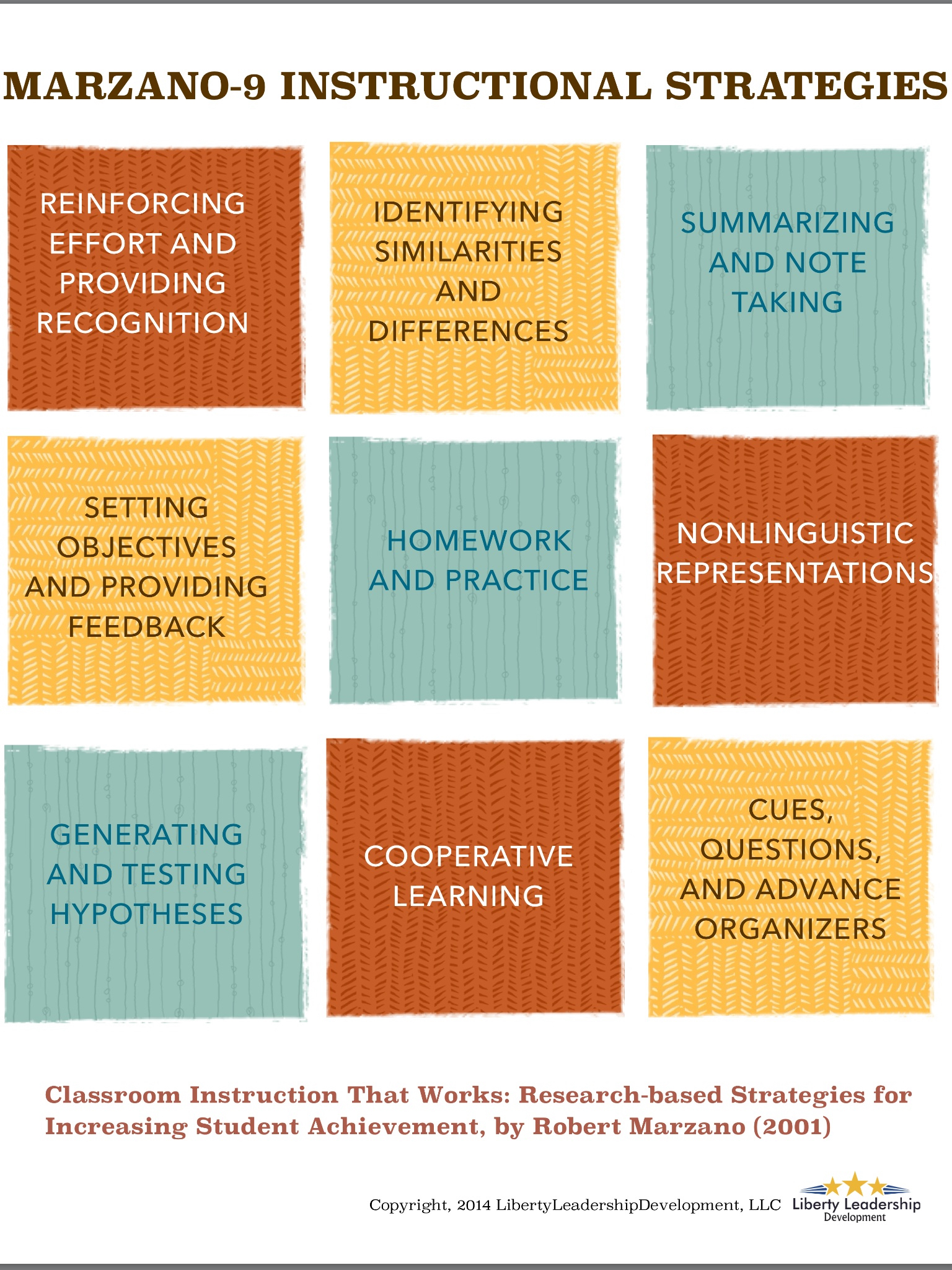8 Chapter 8: Research-Based Instructional Strategies

Guiding Questions for Chapter 8
- What are research-based teaching strategies?
- How do effective teachers think about teaching strategies?
- How do effective teachers maximize the use of research-based teaching strategies?
Introduction
The act of teaching is a performing art. Like musicians or actors, teachers are always focused on their audience. We aim to engage, inspire, and inform. Like other performers, we know some of our techniques are more effective than others, and we consistently seek to hone our craft. A master violinist practices scales every day to improve her performance. In a similar way, a master teacher attempts to think of more interesting questions, meaningful examples, and useful feedback. The act of teaching is both art and science, imagination and skill.
The Universe of Effective Teaching Strategies
Scores of variations and combinations of teaching strategies exist from which teachers may choose. The best teachers are aware of the universe of teaching strategies and carefully select the right combination while teaching a particular subject to a particular group of students. Again, there is no “magic bullet” or perfect strategy, and all require a skillful, competent, artistic teacher to breath life into them. The first step, however, is understanding something about the universe that is available to you–the article below does just that.
Research-based Teaching Strategies
Researchers have studied teaching strategies for decades and we now have evidence of those strategies that seem to have greatest influence on academic achievement. Robert Marzano (2017) conducted a meta-analyses of education research on teaching strategies to see which strategies seemed most related to student academic achievement—at all levels and across all subjects. Interesting ideas.

Here are Marzano’s top nine teaching strategies in order of effect size (i.e., actual effect on student achievement):
- Comparing, contrasting, classifying, analogies, and metaphors. (Effect size=1.61 or 45 percentile points)
- Summarizing and note-taking. (Effect size=1.0 or 34 percentile points)
- Reinforcing effort and giving praise. (Effect size=0.8 or 29 percentile points
- Homework and practice. (Effect size=0.77 or 28 percentile points)
- Nonlinguistic representation. (Effect size=0.75 or 27 percentile points)
- Cooperative learning. (Effect size=0.74 or 27 percentile points)
- Setting objectives and providing feedback. (Effect size=0.61 or 23 percentile points)
- Generating and testing hypotheses. (Effect size=0.61 or 23 percentile points)
- Cues, questions, and advanced organizers. (Effect size=0.59 or 22 percentile points)
Read: Hoover, Clara. 2006. “Research-Based Instructional Strategies.” School Library Monthly 22 (8): 26–28.
Marzano’s strategies, however, are only as good as the teacher employing them. His list of “high-yield strategies” are popular throughout the United States; however, Marzano warns about their possible misuse.

